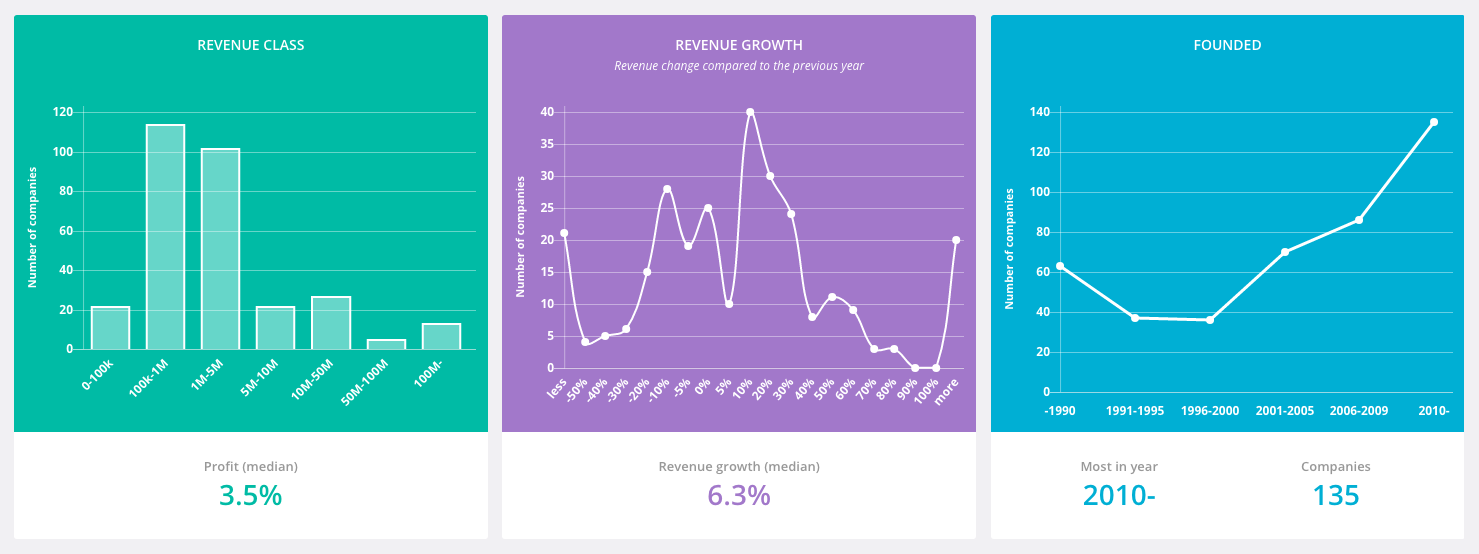Guide for Sales Prospecting in Creative Agencies
While modern marketing methods are the foundation on which creative agencies are built, their sales prospecting often leave room for improvement. Inbound marketing will help you reach the prospects already following you, but how can you identify the future customers who aren’t already your fans?
Few companies post their marketing budgets or investment plans directly online. However, the web does provide us with some hints about future needs. Here are three sources of online data that creative agencies should be using in their lead generation.
With a well-thought-out contact at the right time, you would most likely be on our marketer’s speed dial right now.
1. News on companies you already know
Even a lukewarm lead is better than a cold one. So when an organization you’ve already done business with reports a merger or acquisition, growth, business expansion, received funding or a brand update, you should definitely remind them about your existence. Even less obvious changes, such as a move to a new office or the opening of a new production facitility, may well be insights into future marketing efforts.
And while each piece of news will not be an announcement about the need to switch up agencies, that change is a turning point for the company, and new needs come from new situations. For example, in the past six months we at Vainu have needed SEO/SEM support, infographs, Hubspot consulting, design work from freelancers and a smorgasbord of different kinds of printed materials, from weekly business card orders to complex trade show setups. The tip that would have given us away? The open job ad for our lead marketer last October. With a well-thought-out contact at the right time, you would most likely be on our marketer’s speed dial right now.
I recommend you start following your own customers first, but quickly expand the list to include old customers, familiar prospects, less familiar prospects, email penpals and generally any company you’re interested in. By reading the main news sites and following up on LinkedIn, you will stay on top of things to a certain degree, but the most effective way is to automate the process and order notifications on the changes straight to your email, Slack, or any other system like your CRM through our CRM integration.
If you find a correlation between a technology and a successful business deal, online data will generate you as many leads as your sales team can handle.
2. Changes on company websites
Company websites are surprising in how much insight they may glean into the prospect’s future. Blog posts mention the projects of the fall, new recruitments are posted on the career section, a new headline in the website header promotes a new product, and changes in fonts or images suggest changes in the prospect’s brand guidelines. Just by looking at the site you will figure out real reasons to be in touch, and by automating the process you will make sure that you miss nothing.
Just as telling are changes under the hood, i.e. the technologies used on the website. For example, a new marketing automation system will create several new needs at once: first the prospect will update their CTAs, next they’ll think about creating riveting content, somewhere in between they’ll be fine-tuning their core messages, and finally they’ll need social media training to help the employees spread the messages to their networks. If you can find a correlation between a technology and a successful business deal, online data will generate you as many leads as your sales team can handle.
And while many tech projects may have been done together with an agency, they will still most likely have tons of needs linked to the project. In case you don’t like the competition, however, you could always do a u-turn on the logic and focus on prospects where the websites haven’t been touched in years.

Image 1. Competitor analysis made with the help of Vainu Analyzer.
3. Create a lead yourself
Generally speaking, people listen to reason. By approaching a prospect with a carefully considered pitch, you can get nearly anyone from a cold contact to a meeting to becoming your customer. Lead generation should be easy then: think of a company that should be your customer and contact them.
Obviously, this style of prospecting requires background research. By analyzing masses of data you can identify how that prospect is faring compared to its industry or competitors based on website traffic, digital readiness, or social media engagement. By paring this information with your own customer data, you will be able to construct a clear argument for how they will tackle their marketing challenges best with your services. To build extra trust, use your existing networks and leverage mutual contacts.
From online data you can also find out your own competition, and how you stack up against it. For example, you can find out which other ad agencies are talking about a prospect as their reference case. When you understand who you’re up against, you can tailor your own pitch accordingly.
The sales process should be as simple as possible: when you receive a lead, contact them within 24 hours.
You got a lead, then what?
Lead generation is useless if your agency does nothing with the leads. For creative agencies, the key challenge is building a systematic process for sales, where the key triggering events are followed by a sales action. The process should be as simple as possible: when you receive the lead, contact them within 24 hours. This sales process is one the whole team should commit to, and it should be daily.
